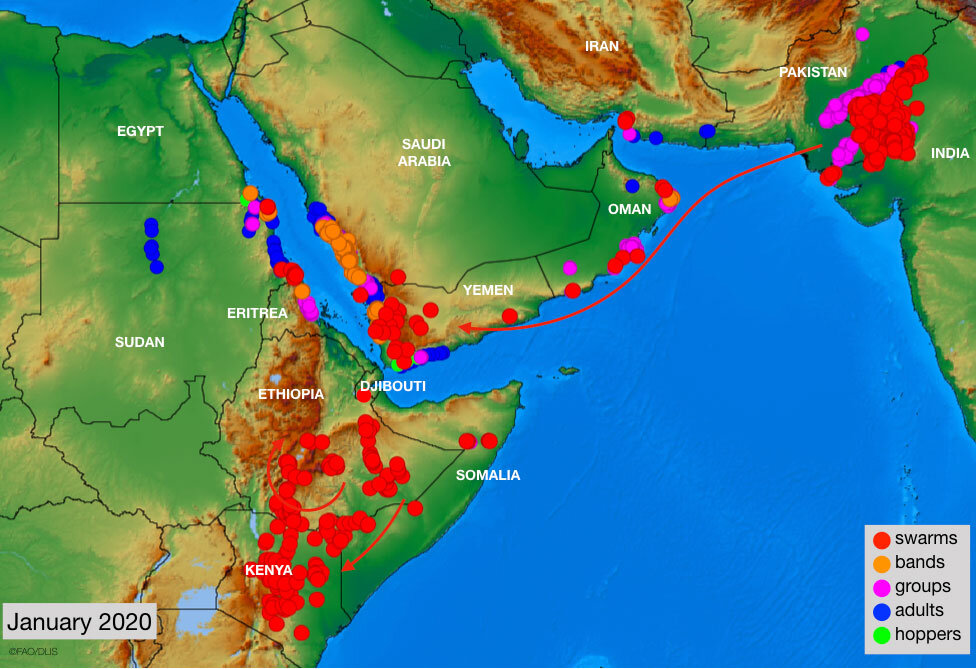Desert Locust to infest southeastern Iran, FAO warns

TEHRAN – According to the Food and Agriculture Organization of the United Nations (FAO), the southeastern province of Sistan-Baluchestan will be infested by desert locust, director of the agriculture organization of the province has said.
Amanollah Touqi called on the governors to be prepared and stay on duty in case of any infestation, and get the vehicles ready for spraying the agricultural lands.
He emphasized that the most important measure is monitoring, so that as soon as the pest accumulates in the region, the operation will be carried out with the help of farmers.
Last year, over 212,300 hectares have fought against the pest in the province.
On February 20, immature swarms from the Arabian Peninsula reached the shores of the Persian Gulf in Kuwait, Bahrain, Qatar and the southwest coast of Iran.
More swarms are likely during periods of southerly winds, FAO reported.
FAO explains that desert locust infestations are normally present in southeast Iran during the spring. Local breeding coincides with seasonal rains that often occur from about February or March until April or May. In warmer years, rains that occur during the winter can lead to late winter and early spring breeding.
By June, vegetation is usual dry again and any adults that were produced during the spring move east towards the Indo-Pakistan summer breeding areas. Most of the spring breeding occurs along a 450 km stretch of coastal plains on the Arabian Sea from Jask (Hormozgan) and the Strait of Hormuz and Gulf of Oman in the west to Chabahar and Gwatar (Sistan-Baluchistan) near the Pakistan border in the east.
The most important area along the coast is the Vashnum Plains near Chabahar. If rains fall and temperatures are warm, breeding may also occur in the interior, namely the Jaz Murian Basin from Kahnuj to Iranshar, and in the Zaboli, Suran and Saravan valleys that lead to Panjgur, Pakistan. Desert Locust adults rarely cross the mountains to the north of these areas.
Last year’s outbreak
Last year, desert locusts penetrated into the provinces of Bushehr, Fars, Hormozgan, Kerman, Khuzestan, and Sistan–Baluchestan, which resulted in major losses on over 500,000 hectares of farmlands and gardens.
The Iranian parliament, known as Majlis, allocated a total budget of 100 billion rials (nearly $2.3 million) to fight desert locusts.
Desert locusts are short-horned grasshoppers that can form large swarms and pose a major threat to agricultural production, livelihoods, food security, and the environment and economic development.
FAO explains that adult locust swarms can fly up to 150 km a day with the wind. Female locusts can lay 300 eggs within their lifetime while an adult insect can consume roughly its own weight in fresh food per day - about two grams every day. A very small swarm eats the same amount of food in one day as about 35,000 people and the devastating impact locusts can have on crops poses a major threat to food security, especially in already vulnerable areas.
FB/MG
Leave a Comment